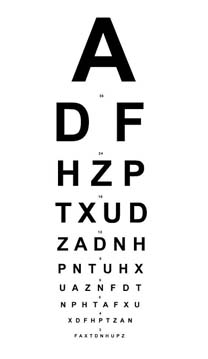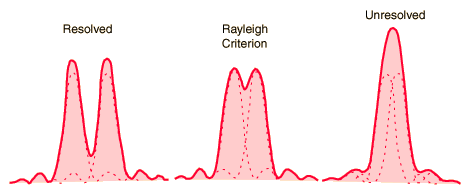What is 20/20 Vision?

Snellen Chart | Visual acuity is typically measured with the use of a standard eye chart called the Snellen chart. It was devised by Dr. Hermann Snellen, a Dutch Ophthalmologist, in 1862. It was originally used at a standard distance of 6 meters, which is about 20 feet. Translated into U.S. common units, normal vision came to be characterized by the fraction 20/20, which corresponded to being able to distinguish the letters on the fourth line down at a distance of 20 feet. The A on the chart has a standard height of 88 mm and the other letters are scaled accordingly. The basic scheme is that the letters two rows down are half the size, and two rows up twice the size. The nominal designations of visual acuity as a number ratio could be based on which lines you could read. If you could just resolve the letters two rows up from the normal vision line at 20 feet, your acuity would be labeled 20/40 and if you could resolve two lines down it would be labeled 20/10. Another way of saying it is that if you vision is 20/40, you can just resolve at 20 feet what a person with normal vision could resolve at 40 feet. A visual acuity of 20/200 is a nominal condition for being considered legally blind.
|
If the above describes the standard for normal vision, what are the factors which limit the resolution of human vision? To examine whether diffraction is the limiting factor, it is interesting to compare this standard of resolution with the limits imposed by diffraction. I haven't been able to pin down the standard height of the 4th line letters, so a nominal height of 20 mm has been used below. The angular separation of
two points of light 20 mm apart at 20 meters is

The Rayleigh criterion for diffraction-limited vision for an iris diameter of 5 mm and a wavelength of 500 nm is:

So 20/20 is about 8x the Rayleigh criterion. Ackerman reports that the
data show:

Another example of the remarkable nature of human senses; the most acute vision is within about a factor of two of the physical limits imposed by diffraction!
|
Index
Vision concepts
References
Ackerman
Wendy Watt
|






